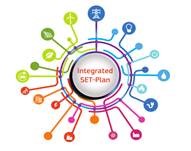The Final Conference of the VERAM Horizon2020 project took place in Brussels on 17 April 2018. This project brought together diverse stakeholders – including five European Technology Platforms (ETPs): Sustainable Minerals Resources, Forest, Construction, Sustainable Chemistry and Advanced Materials – to produce a medium-term (2030) Vision and a longer-term (2050) Strategic Research and Innovation Roadmap for raw materials. The conference discussed the work of the project, its methodologies and its results including the report ‘Research and Innovation Roadmap: A Sustainable and Competitive Future for European Raw Materials’.
The VERAM approach covered all raw materials: both the biotic (for example forestry & natural rubber) value chain and the metal, minerals and aggregates value chain. It looked to reinforce and underpin greater sustainability, economic resilience and technology leadership in the EU. The Vision 2030-2050 sees increased EU production to ensure a base load supply of materials, development of globally competitive sustainable technologies, investment both in and outside Europe to ensure access to resources, the creation of new jobs across the raw materials sector, and contributing to the replacement of jobs lost in other parts of the economy and through automation. It was clear that there will remain a need for primary material resources despite the expected transition to a more circular economy.
Four priorities, 178 action areas
Four priority areas were identified and form the core of the Roadmap considerations:
- Fostering a sustainable supply of raw materials to feed new and existing value chains
- Resource-efficient processing for raw materials
- Raw materials in new products and applications, and
- Closing material loops by maximising the recycling of products, buildings and infrastructure.
The VERAM roadmap includes analysis of the five ETPs’ Strategic Innovation and Research Agendas (SIRAs), the European Innovation Partnership (EIP) on Raw Materials SIRA, public consultations and workshops.
The project also had established an inventory of current Member State, EU and global raw materials policies and R&D funding calls and had surveyed EU Member State funding bodies with 13 Member States providing insights. The inventory database is available on the VERAM web portal.
This highly inclusive process resulted in the formulation of some 178 Research & Innovation Areas (RIAs) across the four identified priorities. Remarkably within the RIAs over 50% overlapped between the two categories of raw materials: biotic on one side and metals, minerals and aggregates on the other side.
Multiple speakers at the final conference applauded the work of the project; not least the integration of diverse input from such a wide range of major stakeholder highlighting the importance of raw materials issues to European competitiveness, jobs and growth. However, it was also noted that the sectors needed to do more to integrate societal interests.
This JRC video shows how lack of raw materials could inhibit the low carbon economy.
Wide dissemination
It is now vital that the results of the project are disseminated as widely as possible to ensure the recommendations and ideas are brought to fruition as soon as possible. The report will be presented to funding authorities at European, national and regional levels, including initiatives such as the BioBased Industries Joint Undertaking (BBI JU) and the Sustainable Process Industries for Resource and Energy efficiency (SPIRE) PPP, to ensure inclusion of VERAM ideas in forthcoming research and innovation calls.









